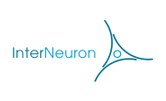Arvind Kumar, KTH Royal Institute of Technology, Stockholm: Network structure and network activity dynamics: What really matters?
| When |
Jan 12, 2021
from 05:15 PM to 06:00 PM |
|---|---|
| Where | Zoom Meeting. Meeting ID and password will be sent with e-mail invitation. You can also contact Fiona Siegfried for Meeting ID and password. |
| Contact Name | Fiona Siegfried |
| Add event to calendar |
|
Abstract
The brain is a network of neurons and the wiring of neurons essentially determines the brain function. Indeed the brain's wiring is not fixed, however the overall structure of the connectivity is largely maintained over long time. Therefore, there is a big interest in mapping the 'connectome' of the brains. But the key questions still remain unclear e.g.: Which properties of the network structure are crucial for network dynamics and/or function? How important are the network topology (small-world, scale-free etc.) and graph theoretic descriptors in shaping the network activity dynamics? In my talk I will consider different types of random, spatially connected and heterogeneous neuronal networks and argue that network topology by itself is a rather fragile concept and does not affect the network dynamics in a qualitative manner. By contrast, simple features of the network structure such as effective synaptic connectivity and the shape of connectivity kernel are more powerful in bringing about qualitative changes in the network activity. I will show that in heterogeneous networks, connectivity inhomogeneities have to be correlated in physical (or connectivity) space to have a qualitative impact on the network activity. Finally, I will discuss to what extent we can see the signatures of neuron or synapse degeneration in the activity of a biological neural network.





